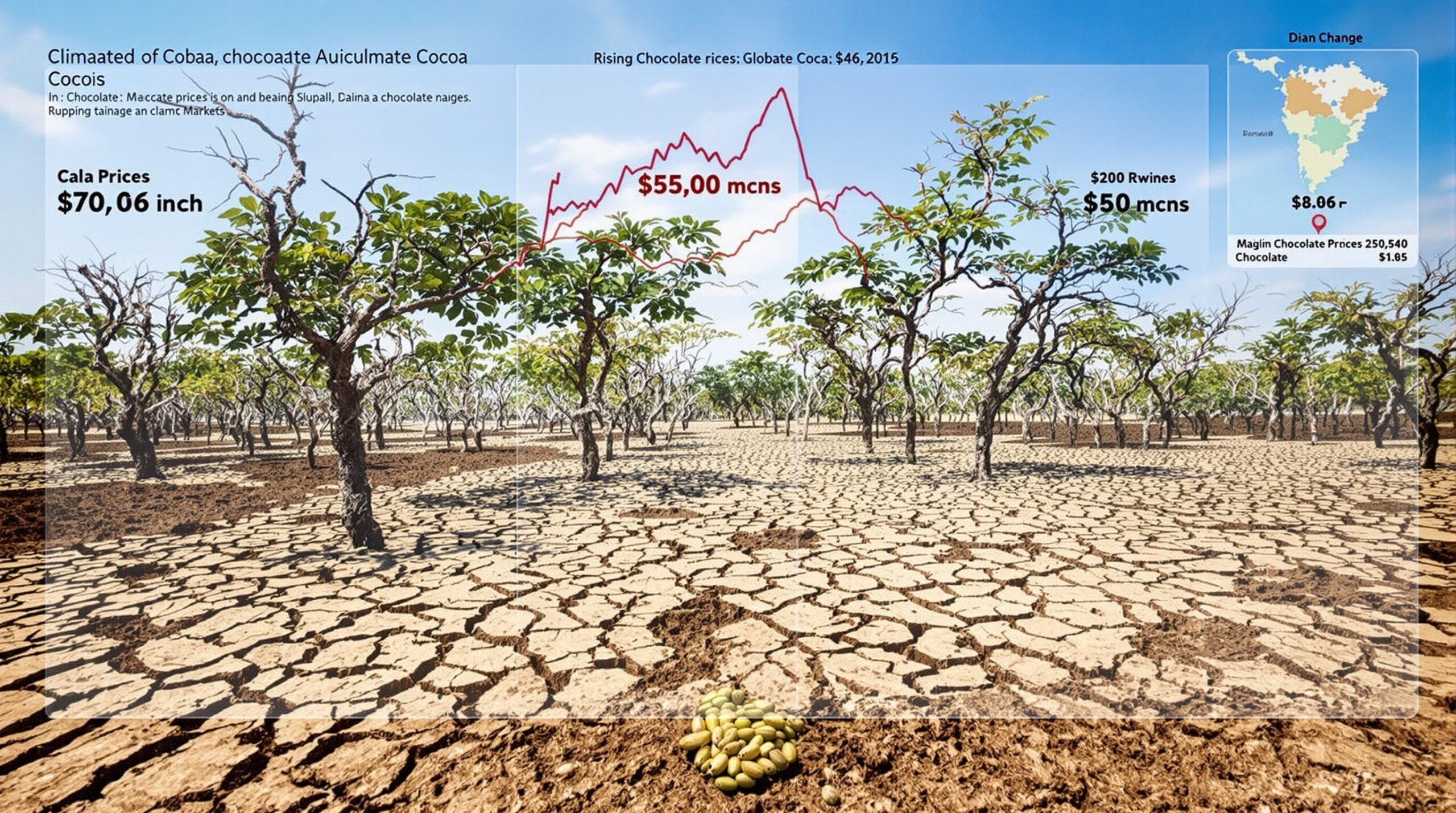Extreme weather has dramatically reduced cocoa yields across West Africa, leading to furious price surges and reordering world supply chains. The cocoa shortage has created ripple effects that reach through producers, distributors, and consumers. Chocolate, once a relatively stable commodity, now faces uncertain futures as companies struggle to adapt. Understanding the causes and consequences of this crisis reveals the vulnerabilities and resilience of the global chocolate industry.
The Origins of the Cocoa Crisis
West Africa produces over 70% of the world’s cocoa, with the Ivory Coast and Ghana standing as the leading suppliers. These countries rely heavily on predictable, ample rainfall to maintain healthy cocoa plantations. However, prolonged droughts have disrupted the natural cycle, severely reducing harvest volumes. Farmers have watched fields wither and yields plummet, creating severe financial strain and uncertainty for millions whose livelihoods depend on cocoa.
Climate variability, including rising temperatures and unpredictable precipitation, has endangered cocoa’s delicate growth requirements. Fungal diseases, worsened by climate stress, further devastate already weakened crops. As a result, the overall cocoa supply has fallen, even as global demand remains robust or rising.
Surging Chocolate Prices Shock Markets
Tightening cocoa supplies have led commodity prices to skyrocket. Futures on cocoa reached record highs, even exceeding $10,000 per metric ton in some 2024 trading sessions. Smaller chocolate manufacturers face steep buying costs, forcing them to increase prices or reduce product sizes. Larger firms also contend with squeezed margins, even if they can leverage long-term contracts or existing inventory in the short term.
Consumers worldwide now face higher chocolate prices and fewer affordable choices. Supermarkets report shrinking variety, as some popular bars or seasonal products become unviable for companies to make. Premium and artisanal chocolate products, especially those with high cocoa content, have become luxury purchases. Even multinational corporations have publicly warned of further price hikes and potential shortages as supply constraints persist.
Supply Chains Face Major Disruptions
Supply shortages have triggered a global scramble as manufacturers and traders seek alternative sourcing options. Some producers turned to other cocoa-growing regions, such as Latin America or Southeast Asia. However, these areas cannot quickly scale up to replace the massive West African output. Land constraints, environmental considerations, and limited infrastructure slow any potential expansion. Building new relationships with suppliers also takes time and resource investment.
Shippers and processors are adapting by diversifying suppliers and investing in technology for better crop tracing and quality assurance. Efforts to find substitute ingredients for cocoa in some recipes have gained traction, but true replacements prove elusive. Innovation may offer only partial relief, as taste, texture, and labeling challenges limit substitution options. Meanwhile, the pressure to maintain ethical and sustainable sourcing complicates quick changes in procurement strategies.
Impact on Farmers and Producing Countries
For cocoa farmers, the crisis brings both hardship and complex opportunities. Sharply higher prices should benefit growers, but actual gains rarely reach them. Many smallholder farmers lack the bargaining power or logistical capacity to capitalize on rising market rates. Droughts also increase operational risks, destroy crops, and reduce overall livelihoods. Rural communities face financial instability, driven by lower yields, fluctuating prices, and higher input costs.
Ghana and the Ivory Coast, which often cooperate to stabilize and support cocoa prices, now face fiscal and social challenges. Export revenues may drop as volumes decline, squeezing national budgets and threatening investment in rural infrastructure. Still, both countries are accelerating programs to encourage climate adaptation, invest in irrigation, and diversify local economies. Their actions could serve as models for other farming-dependent nations facing climate threats in the future.
The Road to Adaptation and Resilience
Long-term resilience in the cocoa sector requires both technological and community-based solutions. Governments, NGOs, and the private sector are increasing efforts to support drought-resistant cocoa varieties. These efforts include developing plants able to withstand hotter temperatures and more irregular rainfall cycles. Training and funding for irrigation, shade management, and agroforestry practices are being scaled up to provide immediate support to vulnerable farmers.
Companies across the chocolate supply chain are investing in transparent sourcing systems and sustainability initiatives. The goal is to ensure that supply shocks do not lead to unchecked exploitation or environmental degradation. Collaboration between producing countries, buyers, and international organizations has become more crucial. These partnerships focus on sharing knowledge and resources to prepare for climatic and market uncertainties.
Consumer Trends and Industry Innovation
With cocoa scarcity taking center stage, industry trends are shifting. Brands are promoting products with lower cocoa content or incorporating alternative flavors. Some innovative companies are exploring “bean-to-bar” models that emphasize transparent supply chains and direct farmer support. Investments in synthetic biology explore techniques for producing cocoa-like ingredients in labs. These substitutes may never fully match the taste or cachet of true cocoa, but they offer supplemental options during shortages.
Consumers also contribute to the adaptation process. Many choose to buy less chocolate or opt for ethical brands that support farmers directly. Consumer awareness campaigns educate on sustainable cocoa farming, child labor issues, and the impacts of climate change. Informed purchasing decisions play a vital role in shaping industry strategies.
The Future of Chocolate in a Changing Climate
The current cocoa crisis provides a stark warning of the vulnerabilities in global food supply chains. As extreme climate events grow more frequent, the chocolate industry faces long-term pressure. Success will depend on adaptive farming, sustainable innovation, and a firm commitment to supporting communities at risk. Companies are already reevaluating relationships with suppliers and reassessing risk management policies.
Despite these challenges, opportunity exists for modernization and increased equity within the sector. Transparent partnerships, climate leadership, and value redistribution can help ensure a more resilient, just cocoa economy. The lessons from this drought-driven shortage will shape chocolate’s future, offering hope that adversity can inspire positive, lasting change across the entire supply chain.

